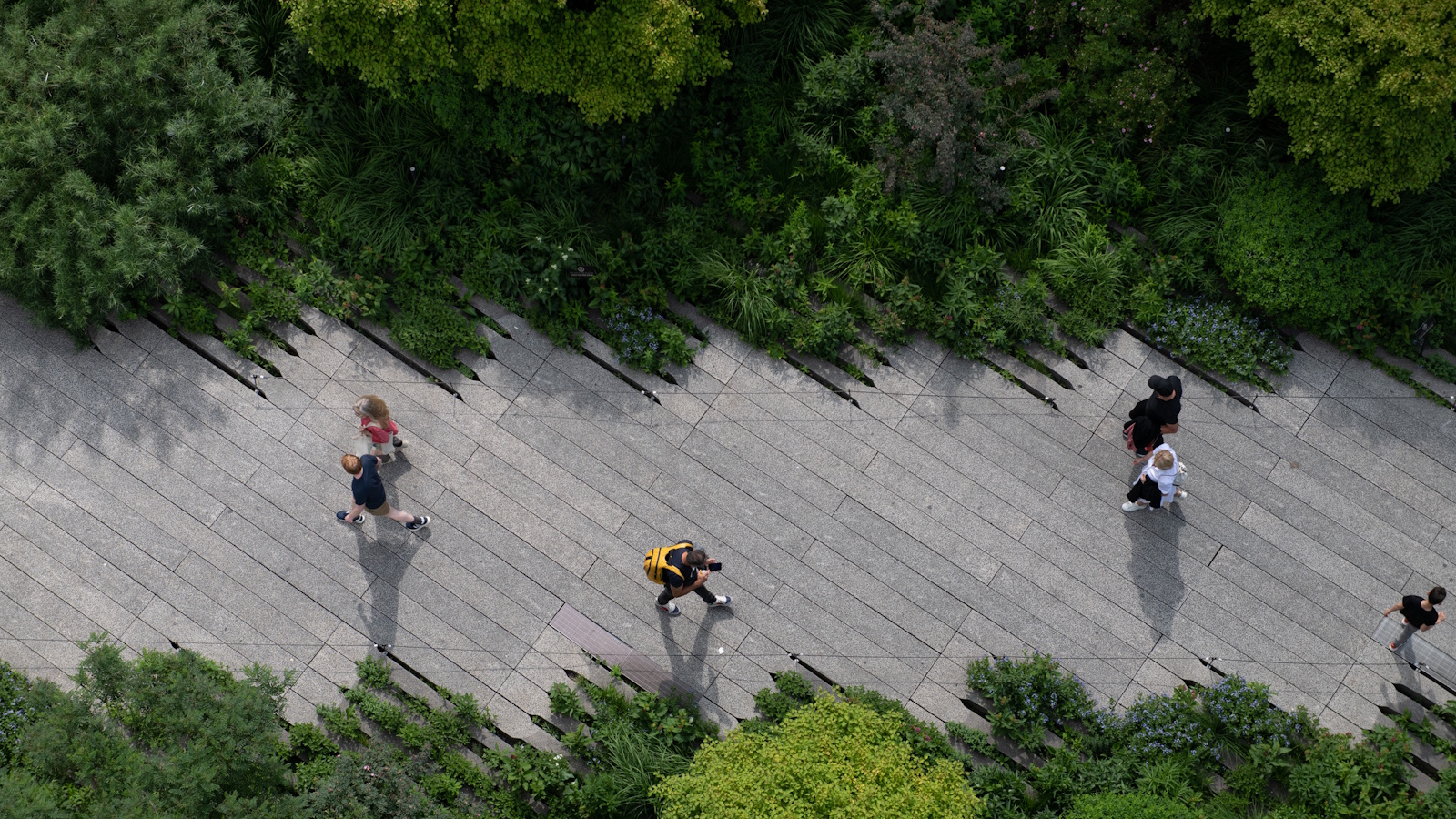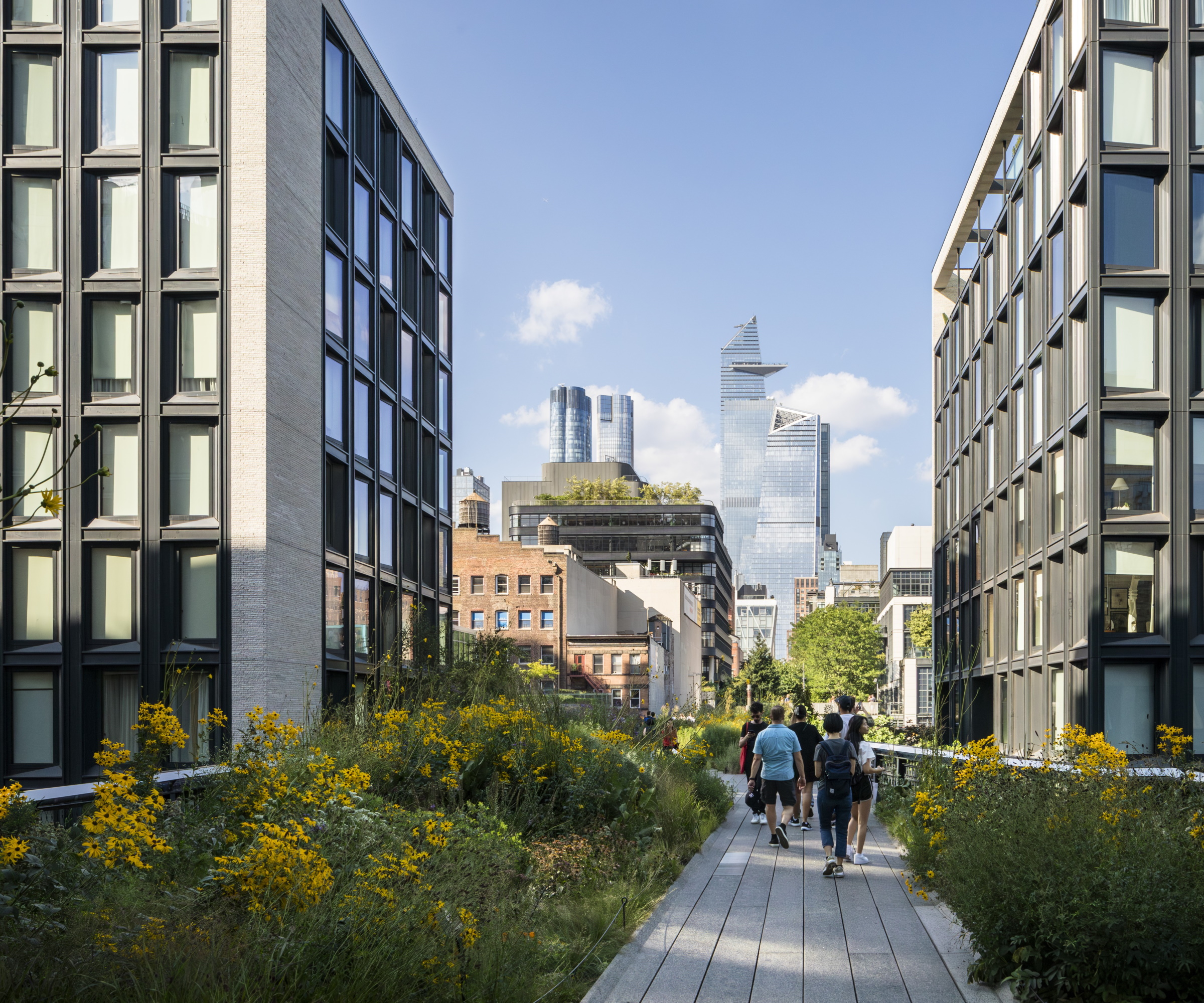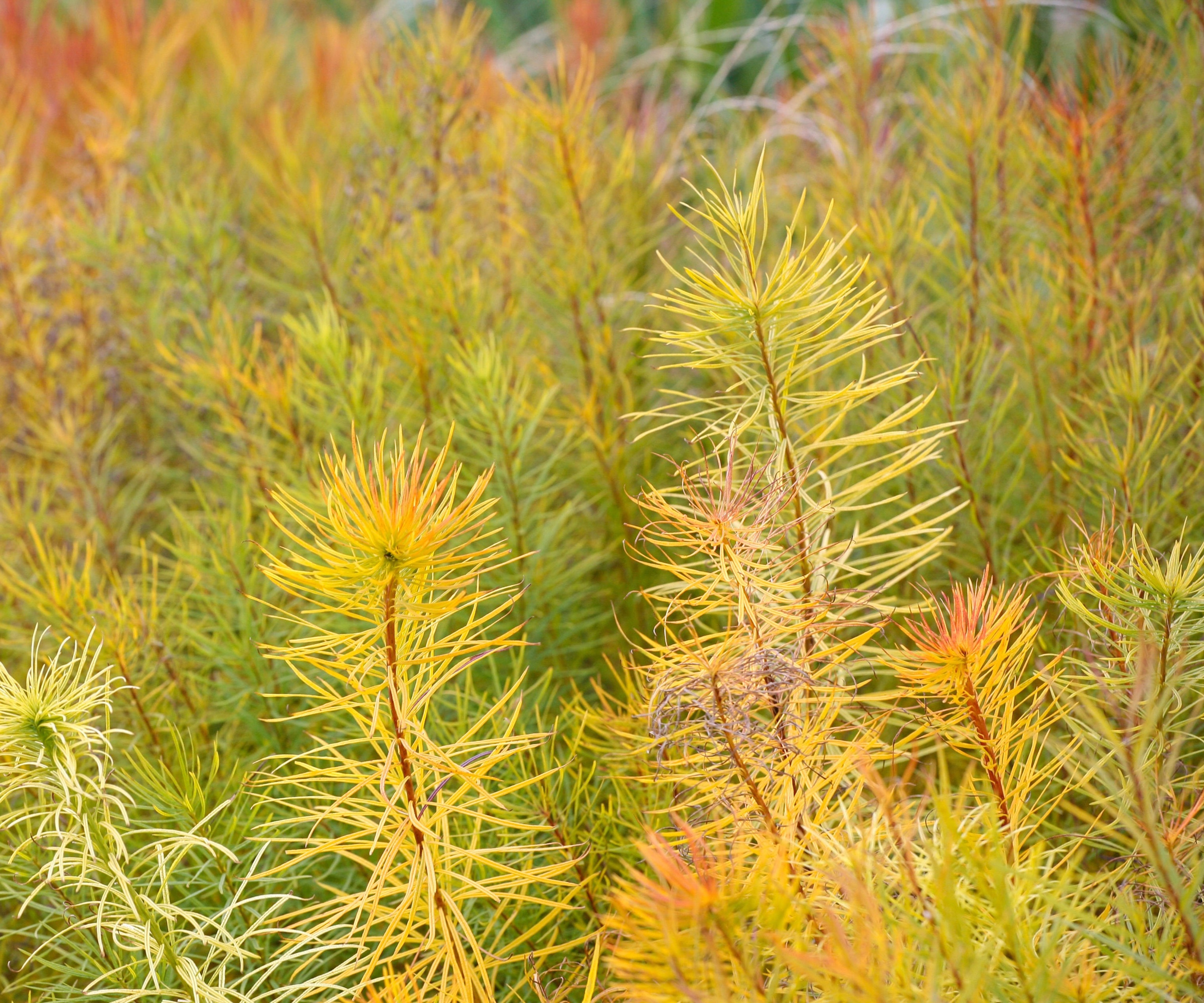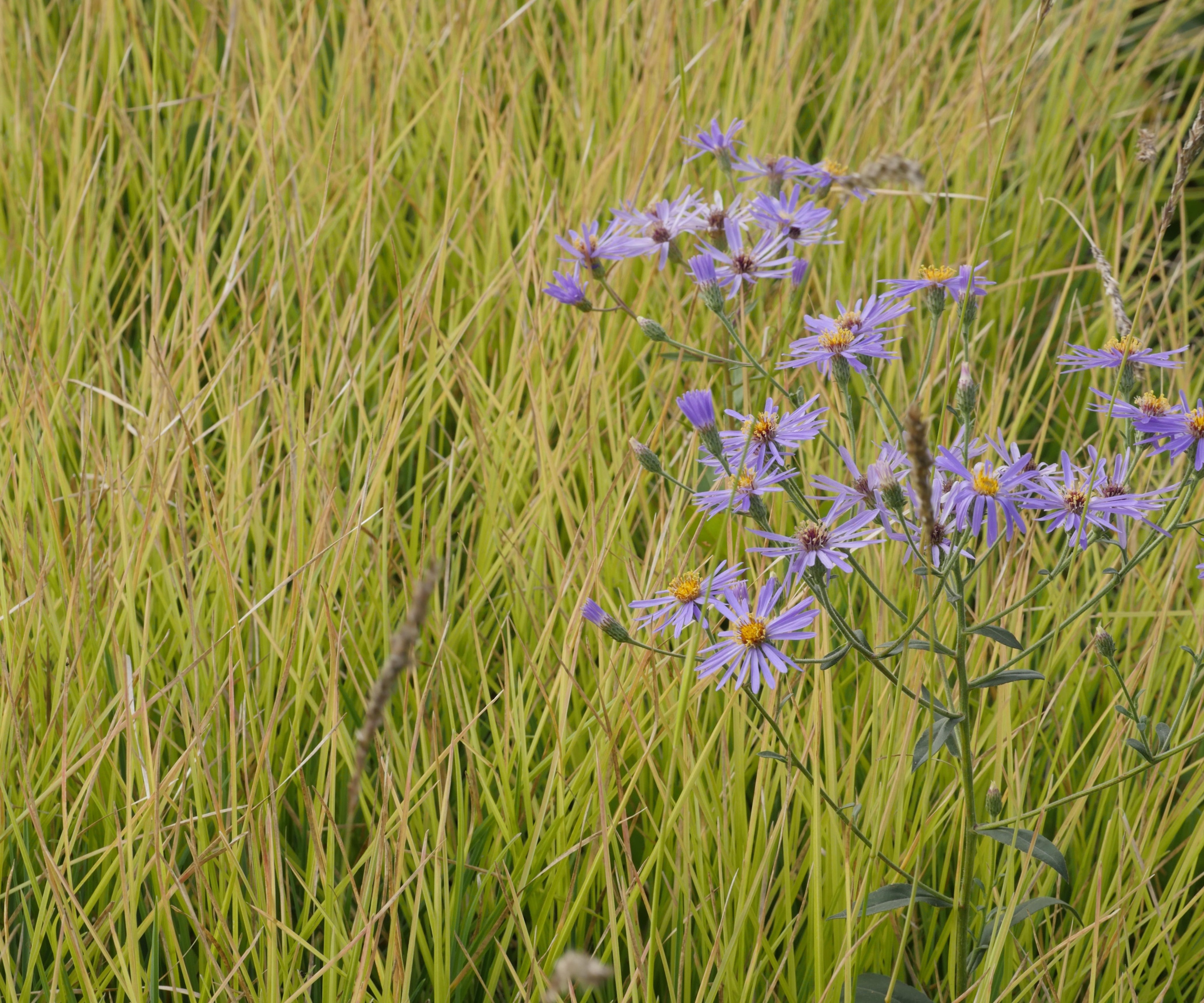
When considering what perennials, shrubs and trees to add to your garden, it is always best to choose plants that can provide interest in fall and winter. While we all enjoy the bounty of spring and summer, with lush greenery and colorful blooms, having plants that add form and texture to your outside space during the coldest months of the year is important.
The 2.3km long New York City High Line can teach us many things, not least about the most resilient plants to grow in urban environments. It is also impressive in terms of plant species that can dazzle during fall and winter, showcasing seasonal brilliance even as the temperature drops.
So, if you are keen to make the most of your yard at all times of the year, drawing inspiration from the High Line is a good idea. Whether you have a small urban rooftop garden or a large suburban backyard, the following plants will not only survive the fall and winter months, but shine.

High Line fall and winter plants
The High Line was designed by Piet Oudolf, Dutch garden designer and leading figure of the New Perennial Movement. While the High Line is limited in width and soil depth, this public garden showcases how challenging urban environments can be transformed into tranquil, lush havens, all it takes is a little care and planning.
Here, Richard Hayden, the High Line's Senior Director of Horticulture, reveals some of his favorite plants that add seasonal flair to this remarkable space.
1. Butterfly milkweed

'Butterfly milkweed, Asclepias tuberosa, is one of the most important native self-seeding flowering plants of the High Line,' Richard says.
'Growing throughout the Western Rail Yards section of the gardens, this perennial will soon become the official wildflower of New York City. It has beautiful fall interest, with sinuous seed pods fading from green to tan that begin to split open as winter nears. As you can see, the silky seeds begin to float away on the breeze.'
In terms of learning how to grow milkweed, this native is hardy down to US hardiness zone 3, thriving in different soils and terrains across North America. For the best results, plant it in a sunny location, where you can enjoy plenty of flowers in summer and seed pods in the fall and winter months.
What's more, this perennial is a host plant for the monarch butterfly, so if you want to support wildlife in your yard, milkweed is a good choice.
2. Thread-leaf bluestar

Growing from US hardiness zone 5 to US hardiness zone 8, Amsonia hubrechtii, or the thread-leaf bluestar is another plant that can provide superb year-round interest.
'This North American perennial is native to Arkansas and can grow in a variety of regions,' Richard says. 'It is considered a flood-resilient plant, while also tolerating drought and dry conditions. It is truly a plant for all weather.
'Delicate pale-blue flowers emerge in the spring, but the most spectacular season for the thread-leaf bluestar is the fall,' Richard adds. 'Come October and November, it begins an incredible transformation into a fuzzy golden bush that adds so much drama to the fall grassland gardens here. It becomes a golden backdrop for architectural seed heads like coneflowers and black-eyed Susans.'
Ideal to give as a gift, this book tells the story of how the High Line came to be, with a focus on both plants and people from this world-famous garden.
With striking flowers and unusual seed pods in fall, butterfly milkweed, Asclepias Tuberosa, provides year-round interest.
The blue flowers of this native Amsonia plant are striking and unusual, providing seasonal interest at all times of the year.
3. Culver's root

If you are looking for a native plant that steals the show in fall and winter, then culver's root, or Veronicastrum virginicum, is one of the best perennials to grow. Growing best in US hardiness zones 3 to 8, this species is found growing in wet to moist prairies and meadows across North America.
'Culver's root has such an interesting upright habit and unique texture,' Richard continues, 'with leaves appearing in whorls around the stem, arching up towards candelabra-shaped white blooms that are bee-magnets.
'As the flowers fade in summer, the seedheads remain and slowly age to almost black come winter time, looking picturesque in the frost and snow.'
4. Little bluestem

Often considered one of the best native grasses for winter interest, Schizachrium scoparium, commonly known as little bluestem, provides a spectacular seasonal show. Growing best from US hardiness zone 3 to zone 9, this resilient prairie grass is one of the High Line's star plants as the seasons change.
'We have a couple of different little bluestem varieties on the High Line,' Richard says. 'Probably our favorite is 'Standing Ovation', a cultivar that has a wonderful upright structure and great bronzy fall color.
'I also enjoy 'Ha Ha Tonka', which was a Piet Oudolf selection. This variety has very feathery stems which are especially beautiful when backlit in the fall and winter light.'
5. Autumn moor grass

'Autumn moor grass, or Sesleria autumnalis, is possibly the most numerous plant on the entire High Line,' Richard adds. 'This grass is a superb understory plant and adds great golden color in the fall months, with texture and movement all year long.'
Native to Europe, this ornamental grass grows best in US hardiness zones 5 to 8, reaching a height of two to three feet. This plant thrives in full sun or dappled shade and tends to do better in free-draining soil.
Autumn moor grass live plants are available to buy online from Amazon.
FAQs
Which fall-flowering plants work for pots on a balcony?
If you are looking for winter or fall planter ideas, try growing autumn moor grass alongside coneflowers or black-eyed Susans. I find that grasses and perennials planted together in a pot make for a long-lasting display. Flowers should last for much of the summer and fall, and grasses can be left until the early spring to be cut back, providing a seasonal High Line display.
'Like any good parent, I am not supposed to have favorites,' Richard says, 'but there is one section of the High Line that I particularly enjoy during fall. The Chelsea Grasslands take center stage at this time of year, with bluestem grasses and compass plants reaching their dramatic denouement, while purple asters and switchgrasses create an interesting textured composition.'
For more inspiration, see our guide on the best shrubs for fall berries, to fill your borders with red, black and white fruit this fall and winter that will prove popular with birds during the cold months.







